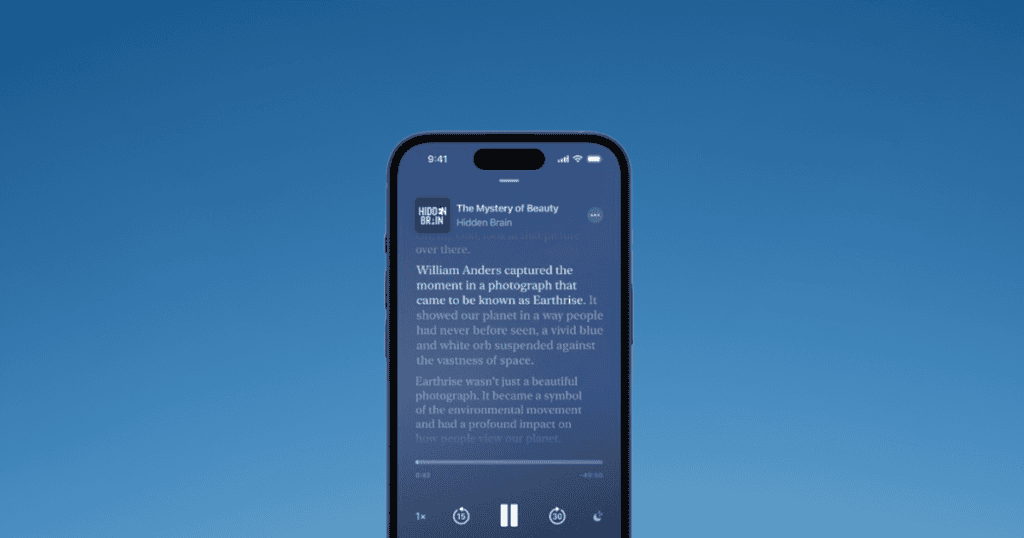Apple Podcasts’ recent introduction of transcriptions in eight additional languages marks a significant development in the realm of podcast accessibility. By catering to non-English speakers and hearing-impaired users, this initiative not only enhances user experience but also encourages a broader audience engagement. The implications of this expansion extend beyond mere accessibility; they may influence content creation and consumption trends globally. As we consider the potential shifts in the podcast landscape, one must contemplate how this move could redefine listener interactions and the types of content that emerge in response.
Overview of New Language Support
Apple Podcasts has significantly enhanced its transcription capabilities by adding support for eight additional languages, thereby broadening accessibility for listeners worldwide.
This expansion includes Brazilian Portuguese, Danish, Dutch, Finnish, Italian, Norwegian, Portuguese, and Swedish, reflecting a commitment to inclusivity in audio content consumption.
The newly integrated transcriptions are generated shortly after podcast publication, ensuring that they are available to users promptly.
Each new episode featuring transcriptions is marked by a speech bubble icon, enhancing user experience and making it easier for listeners to identify accessible content.
Benefits for Non-English Speakers
As the podcasting landscape evolves, the introduction of transcriptions in eight new languages significantly benefits non-English speakers by providing them with greater access to diverse audio content. By enhancing accessibility, this initiative allows non-English speakers to engage with podcasts that were previously less accessible, thereby fostering a more inclusive environment within the medium.
Transcriptions in languages such as Italian, Portuguese, and Swedish not only facilitate comprehension for non-native speakers but also encourage creators to produce multilingual content. The real-time highlighting of words within the transcriptions aids understanding, allowing listeners to follow along with the audio more effectively.
This feature is particularly advantageous for those who may struggle with language barriers, as it enables them to grasp new concepts and ideas with greater ease.
Additionally, having transcripts available shortly after publication promotes higher engagement and retention rates among non-English speakers, as they can quickly access and digest new content.
Impact on Hearing-Impaired Users
The introduction of transcriptions in eight additional languages has a profound impact on hearing-impaired users, significantly enhancing their ability to engage with podcast content. By providing a text alternative to audio, transcriptions facilitate comprehension, enabling hearing-impaired individuals to follow discussions or narratives more effectively. This accessibility feature is crucial in ensuring that users can fully participate in the podcasting experience.
Moreover, the inclusion of transcriptions allows hearing-impaired users to search for specific topics or segments within podcasts, thereby improving content discovery. This capability not only enriches their listening experience but also empowers them to navigate a wealth of information more efficiently. By promoting inclusivity, the initiative aligns with global standards for digital content accessibility, ensuring that podcasts are usable by a broader audience.
Importantly, the availability of transcriptions in multiple languages further supports hearing-impaired users who may be non-native speakers, allowing them to access content in their preferred language. In this way, the rollout of transcriptions not only addresses the needs of hearing-impaired individuals but also fosters a more inclusive podcasting environment for all users.
Enhancing Content Accessibility
A significant advancement in podcasting is the introduction of transcriptions in multiple languages, which greatly enhances content accessibility for a diverse audience. By expanding transcription support to include languages such as Brazilian Portuguese, Danish, Dutch, Finnish, Italian, Norwegian, Portuguese, and Swedish, Apple Podcasts is catering to a wider range of global audiences.
This initiative not only benefits non-English speakers but also serves hearing-impaired individuals, allowing them to engage with podcast content more effectively.
The transcriptions are designed with a focus on improving accessibility, ensuring that users can easily follow along and comprehend complex discussions. This feature significantly boosts podcast engagement and retention, as listeners can read along while listening, enhancing their overall experience.
Moreover, the ability to highlight words and sections in real-time during playback further enriches user interaction. This functionality enables users to navigate to specific points in the audio, allowing for a tailored listening experience.
As podcasting continues to grow, these advancements in accessibility will play a crucial role in fostering inclusivity and ensuring that content is available to all, regardless of language or hearing ability.
Encouraging Multilingual Podcast Creation
Encouraging multilingual podcast creation not only broadens the potential listener base but also enriches the diversity of content available in the podcasting landscape. The introduction of transcriptions in eight new languages, including Dutch, Italian, and Swedish, empowers creators to engage with non-English speaking audiences, fostering a more inclusive environment.
By providing transcripts, podcasts become more accessible and searchable, allowing listeners to choose their preferred mode of engagement—whether through audio or text. This initiative not only enhances accessibility for diverse audiences but also enables creators to leverage SEO benefits, improving content discoverability and marketing strategies.
As the popularity of non-English podcasts continues to rise, the ability to produce multilingual content is increasingly vital for creators aiming to connect with a global audience. Transcriptions facilitate better engagement and understanding, making it easier for listeners to consume content that resonates with them culturally and linguistically.
Ultimately, this focus on multilingual podcast creation aligns with the broader trends in the industry, encouraging a richer tapestry of voices and stories that reflect the world’s diversity, thus enriching the podcasting experience for all.
Global Trends in Podcast Consumption
Podcast consumption is witnessing a remarkable surge on a global scale, with over 500 million individuals tuning in regularly. This growth highlights an increasing demand for diverse content, particularly in non-English languages such as Spanish, Portuguese, and French. As audiences seek podcasts in their native languages, the incorporation of transcriptions becomes vital for enhancing accessibility and engagement.
Recent studies indicate that approximately 78% of podcast listeners prefer content that offers transcriptions, which significantly improves their understanding and retention. This trend emphasizes the need for creators to consider multilingual production, aligning with the global shift towards inclusive digital content consumption.
Furthermore, podcasts that feature transcriptions can experience up to a 30% increase in listener retention, underscoring the positive impact of accessibility features on audience engagement.
The introduction of transcription support in multiple languages by platforms like Apple Podcasts marks a critical step in making audio content more inclusive. As the podcasting landscape continues to evolve, leveraging transcriptions will not only broaden the reach of creators but also foster a deeper connection with audiences worldwide, paving the way for a more engaged and diverse listener base.
How to Access Transcriptions
Updated to the latest version of iOS 17.4 or later, users can easily access the new transcription feature in Apple Podcasts. This enhancement allows listeners to engage with content in eight additional languages, including Brazilian Portuguese, Danish, Dutch, Finnish, Italian, Norwegian, Portuguese, and Swedish.
To access these transcriptions, users simply need to look for the speech bubble icon that appears shortly after new podcast episodes are released. This icon facilitates easy identification of available transcripts, which can be accessed via the Quote button on the Now Playing screen. By tapping on individual words in the transcript, users can jump to specific points in the audio, significantly enhancing their listening experience.
The introduction of transcriptions not only improves accessibility for non-English speakers and those with hearing impairments, but it also encourages content creators to explore multilingual production.
As a result, Apple Podcasts is fostering a more inclusive environment where a broader audience can engage with diverse audio content. With these features, users can enjoy a seamless experience while navigating through their favorite podcasts.
Conclusion
The expansion of Apple Podcasts to include transcriptions in eight additional languages significantly enhances accessibility for diverse audiences. This initiative not only benefits non-English speakers but also supports the hearing-impaired community, fostering a more inclusive podcasting environment. Notably, research indicates that approximately 78% of podcast listeners prefer consuming content in their native language, underscoring the importance of such developments. The introduction of multilingual transcriptions is poised to encourage greater engagement and creativity within the global podcasting landscape.




